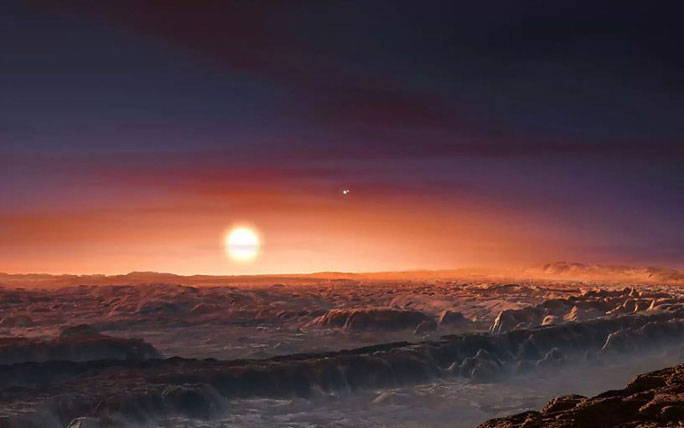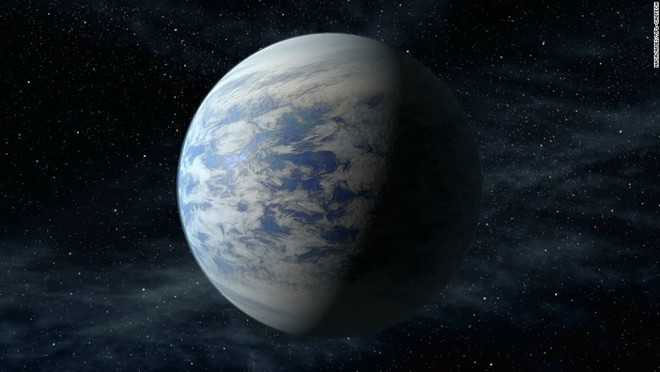Space magazine has compiled a list of some of the most Earth-like planets among the more than 4,000 confirmed exoplanets.
1. TRAPPIST-1e
This is the most habitable planet among the 7 Earth-like planets in the TRAPPIST system. While some of its siblings may be ocean planets—types of planets with excessive water that scientists are still skeptical about in terms of sustaining life—TRAPPIST-1e is a fully rocky planet resembling Earth and has a temperate climate.
2. Proxima Centauri b
At a distance of just 4 light-years, Proxima Centauri b is a special focus for astronomers. It lies entirely within the habitable zone of its parent star, a small and much cooler star than the Sun, emitting a gentle orange light.

A captivating view on Proxima Centauri b – (Photo: NASA)
This planet is 1.27 times larger than Earth and also has a temperate climate, but the only obstacle to life is that it may receive high levels of ultraviolet radiation due to its proximity to its parent star.
3. Kepler-1649c
This exoplanet is similar in size to Earth and was officially confirmed by NASA in 2020. More detailed studies published in 2021 indicate that this planet has a cooler climate than Earth, receiving about 75% of the light that Earth gets from the Sun. However, this is still a perfect parameter for life. Kepler-1649c is located 300 light-years away from Earth.
4. Kepler-452b
This planet, which is 1.6 times the size of Earth, orbits a star that is 10% larger than the Sun. Clear data has been collected despite it being 1,400 light-years away from Earth. It is a rocky planet similar to Earth and lies within the habitable zone of its parent star.

Artists’ depiction of Kepler-452b as a second Earth – (Photo: NASA)
5. Kepler-442b
This planet, which is 33% larger than Earth, is one of the rare candidates that scientists assert is “bright enough to sustain a large biosphere.” Research published in the Monthly Notices of the Royal Astronomical Society indicates that scientists have considered various possible conditions for life through spectral data and found that photosynthesis is likely occurring on the planet.
This planet orbits its parent star every 112 days and is located 1,194 light-years away from us.


















































